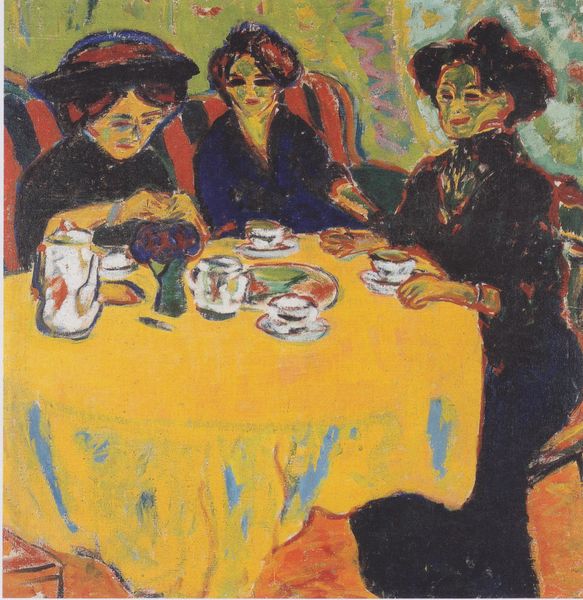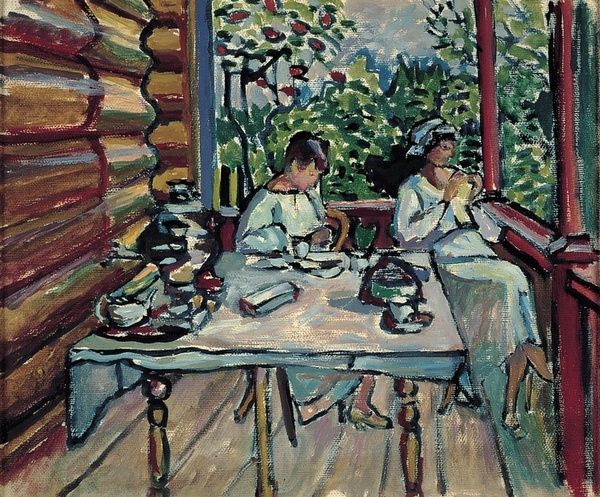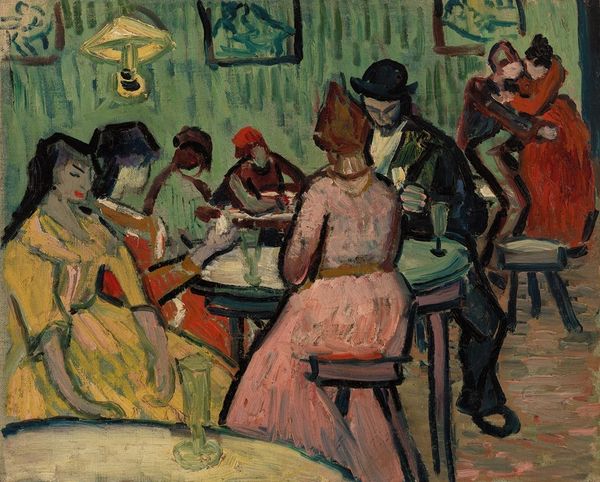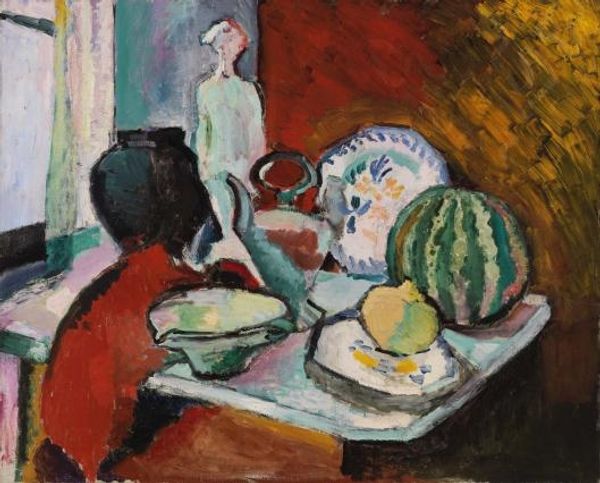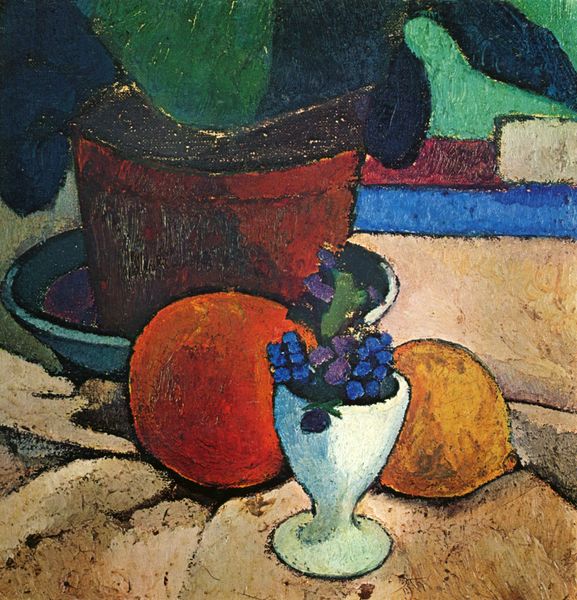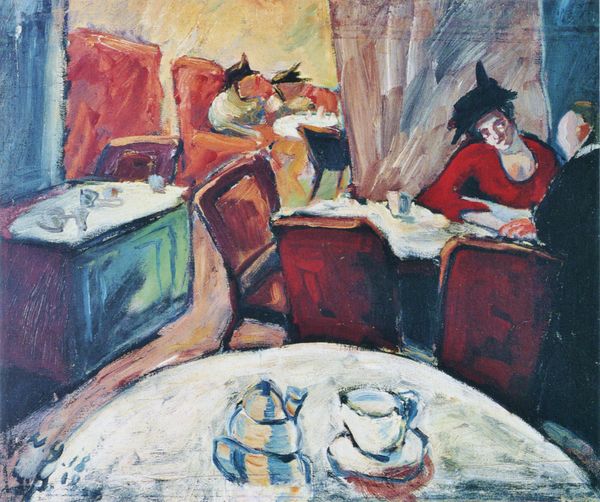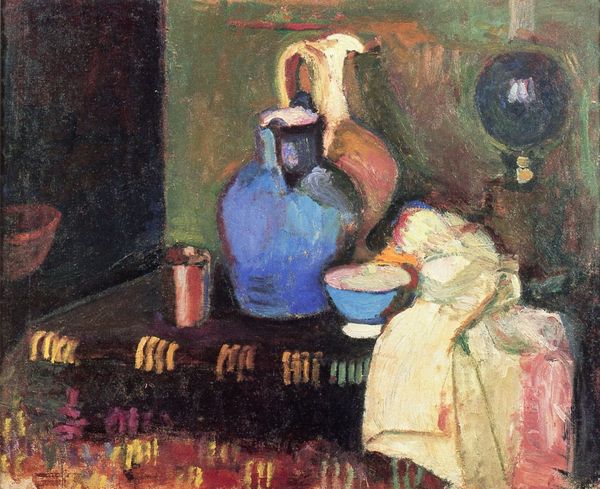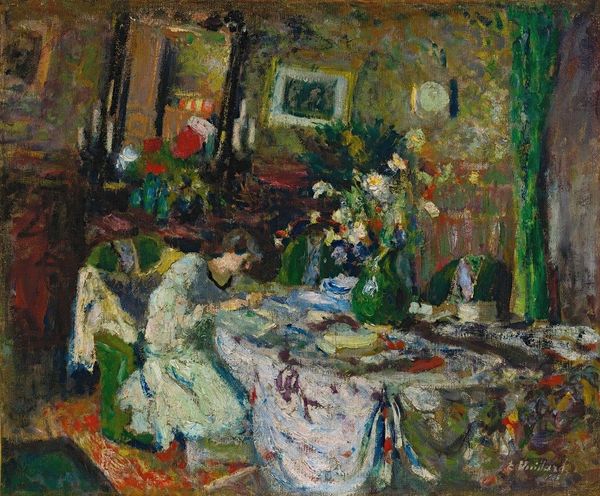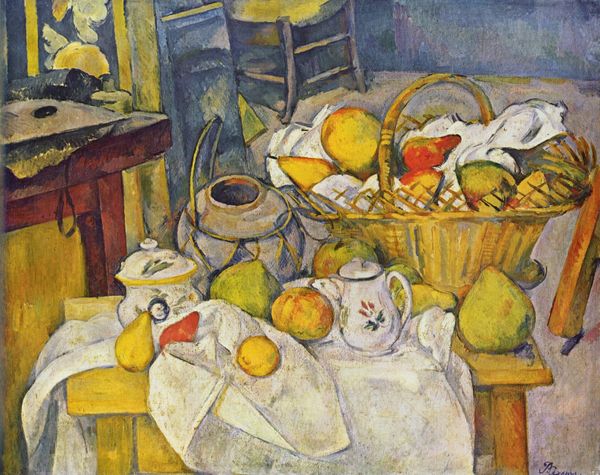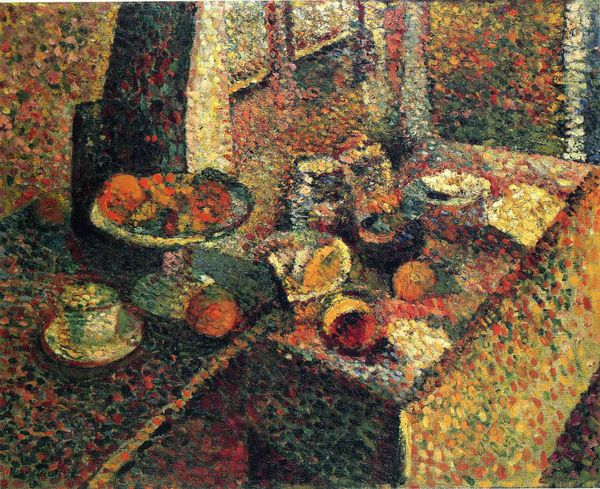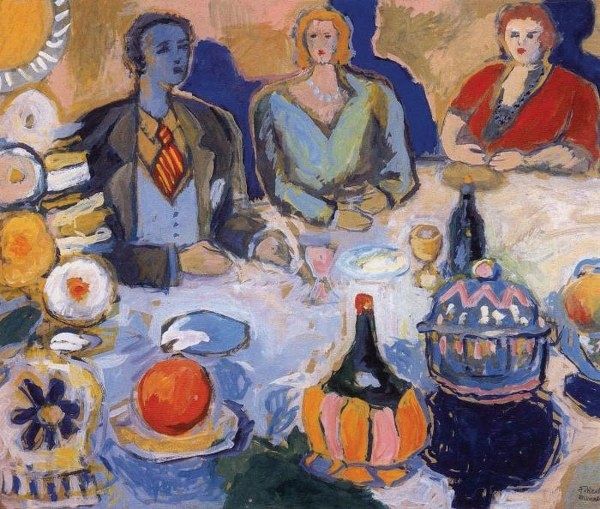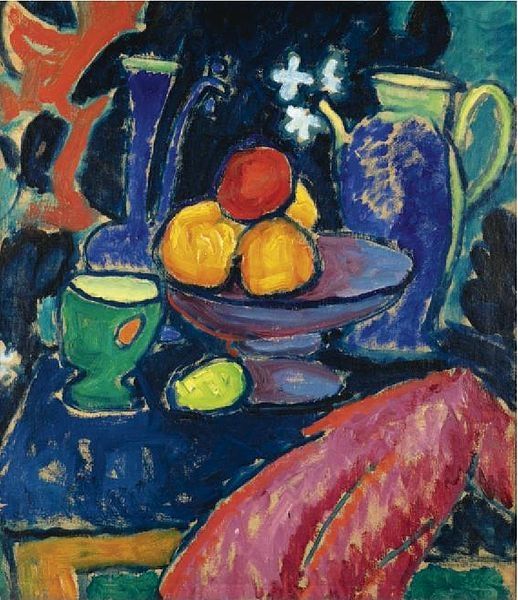
painting, oil-paint
#
portrait
#
painting
#
oil-paint
#
german-expressionism
#
acrylic on canvas
#
group-portraits
#
expressionism
#
facial portrait
#
portrait art
#
fine art portrait
Dimensions: 44.8 x 50.8 cm
Copyright: Public domain
Curator: The scene almost glows, doesn't it? There's a palpable domesticity here. Editor: Indeed. Looking at August Macke’s 1912 painting, "Three Women at the Table by the Lamp", currently held in a private collection, the warmth radiating from that central lamp immediately draws the eye. But what I find compelling is how this simple domestic scene becomes a window onto larger cultural narratives of early 20th-century life. Curator: The lamp is undoubtedly the key to unlocking the image’s deeper meanings. Lamps are perennial symbols of knowledge and awareness. The way it illuminates the women absorbed in their activities—reading, perhaps knitting, maybe simply relaxing—suggests an embrace of intellectual and creative pursuits within the private sphere. Editor: Precisely. And observe how the choice of oil paint—applied with such visible brushstrokes—heightens the expressive quality. You sense the influence of German Expressionism here; the distorted perspectives and somewhat exaggerated colors add a psychological dimension to what could have been just a commonplace moment. Were these women from Macke’s social circle? Friends or family members perhaps? It hints at intimacy and the everyday realities of middle-class women at the time. Curator: There’s also the symbolic placement of the objects on the table. A bottle of wine—shared stories and communion. A dish of fruit - nourishment and the sensual enjoyment of life's simple offerings. All these point towards ritual and togetherness, a potent visual allegory about female bonding. It feels archetypal in a sense, beyond just one time and place. Editor: However, one cannot ignore the socioeconomic implications here. These women are likely from a privileged background, enabling leisure activities that reflect societal status. How does this impact its broader historical meaning, specifically during that particular historical and geographical context, particularly considering the socio-political and economic instability bubbling up around that period? Curator: That’s true. Still, the emotional resonance is powerful. It is an enduring testament to the quiet strength and solidarity women share, especially during the shifting currents of pre-war Europe. Macke elevates these personal experiences to something universal and resonant. Editor: Agreed, although unpacking it further helps reveal how images shape cultural memories. Thank you. Curator: And thank you. It’s intriguing to find those universal truths shining through.
Comments
No comments
Be the first to comment and join the conversation on the ultimate creative platform.
